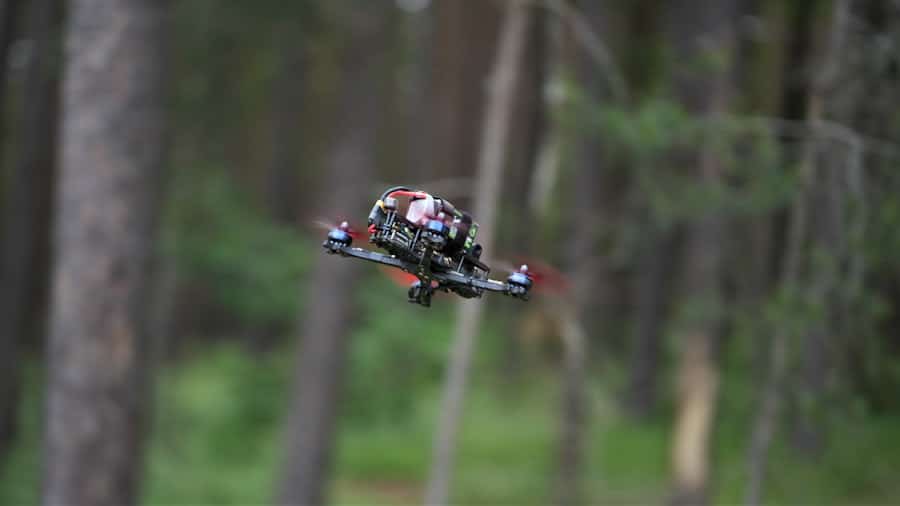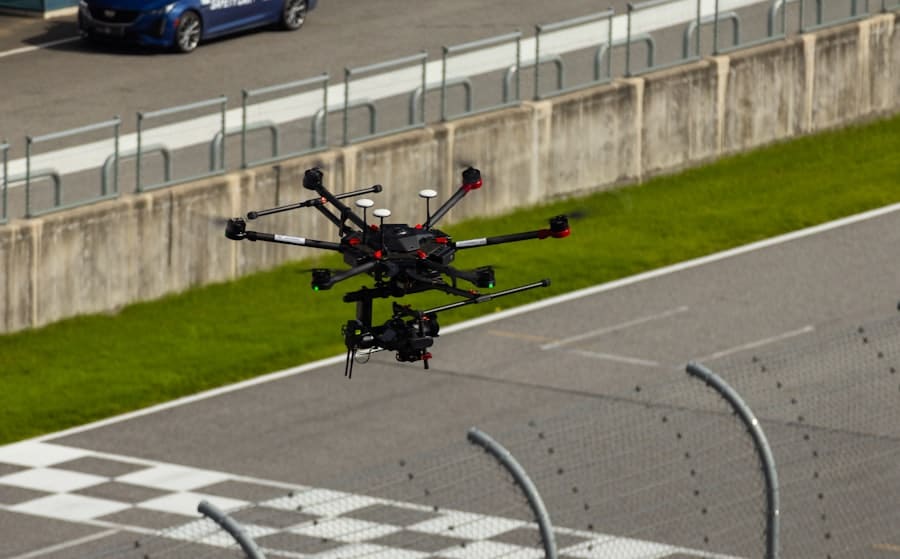Drone racing has emerged as a captivating sport that combines cutting-edge technology with the thrill of competition. Over the past decade, the popularity of this high-speed spectacle has surged, drawing in enthusiasts from various backgrounds, including technology aficionados, gamers, and traditional sports fans. The genesis of drone racing can be traced back to the early 2010s when hobbyists began to modify quadcopters for speed and agility, leading to informal races in parks and open fields.
As these events gained traction, they caught the attention of media outlets and tech companies, paving the way for organized competitions. The establishment of formal racing leagues, such as the Drone Racing League (DRL) and MultiGP, has further propelled the sport into the mainstream. These organizations have created structured environments for pilots to showcase their skills, complete with elaborate courses and professional-grade drones.
The advent of live-streaming technology has also played a crucial role in popularizing drone racing, allowing fans to watch races in real-time from the comfort of their homes. As a result, drone racing has transitioned from a niche hobby to a recognized sport, complete with sponsorships, professional pilots, and a growing fan base.
Key Takeaways
- Drone racing has seen a significant rise in popularity as a professional sport, attracting both participants and spectators.
- The technology behind drone racing involves high-speed, agile drones equipped with first-person view (FPV) cameras for a thrilling racing experience.
- The professional drone racing circuit features top pilots competing in high-stakes races with cash prizes and sponsorships on the line.
- Drone racing is highly competitive, requiring precision flying skills and strategic decision-making to outmaneuver opponents on the race track.
- Spectators are drawn to drone racing for its adrenaline-pumping action, immersive FPV footage, and the thrill of witnessing skilled pilots navigate challenging courses.
The Technology Behind Drone Racing
At the heart of drone racing lies an intricate blend of technology that enables pilots to navigate their drones at astonishing speeds. Racing drones are typically equipped with high-performance components, including powerful brushless motors, lightweight frames, and advanced flight controllers. These elements work in harmony to provide the agility and responsiveness required for competitive racing.
The use of first-person view (FPV) systems is another defining feature of drone racing; pilots don goggles that stream live video from a camera mounted on their drones, allowing them to experience the race as if they were onboard. The evolution of battery technology has also played a significant role in enhancing drone performance. Lithium polymer (LiPo) batteries are commonly used in racing drones due to their high energy density and lightweight properties.
These batteries allow drones to achieve rapid acceleration and maintain high speeds throughout the race. Additionally, advancements in software and telemetry systems have enabled pilots to fine-tune their drones for optimal performance. By analyzing data such as battery voltage, motor temperature, and GPS positioning, pilots can make informed adjustments to improve their racing strategies.
The Professional Drone Racing Circuit

The professional drone racing circuit has seen remarkable growth, with several leagues and events emerging globally. The Drone Racing League (DRL) is perhaps the most prominent organization in this space, hosting a series of high-stakes competitions that attract top pilots from around the world. DRL events are characterized by their visually stunning courses, often set against iconic backdrops such as stadiums or urban landscapes.
The league’s commitment to innovation is evident in its use of cutting-edge technology, including augmented reality graphics that enhance the viewing experience for spectators. Another significant player in the professional drone racing scene is MultiGP, which focuses on grassroots racing and community engagement. MultiGP organizes local chapters where pilots can compete in races at various skill levels, fostering a sense of camaraderie among participants.
The league also hosts national championships that culminate in a grand finale, showcasing the best talent in the sport. Both DRL and MultiGP have attracted sponsorships from major brands, further legitimizing drone racing as a professional sport and providing financial support for pilots and events.
The Competitive Nature of Drone Racing
Drone racing is inherently competitive, demanding not only technical skill but also strategic thinking and quick reflexes. Pilots must navigate complex courses filled with obstacles such as gates, flags, and tunnels while maintaining high speeds. The ability to make split-second decisions can mean the difference between victory and defeat.
This competitive edge is heightened by the fact that races are often decided by mere fractions of a second, adding an exhilarating layer of intensity to each event. Moreover, the competitive landscape is continually evolving as new technologies and techniques emerge. Pilots are constantly seeking ways to gain an advantage over their rivals, whether through optimizing their drone’s performance or refining their flying techniques.
This relentless pursuit of excellence fosters a culture of innovation within the sport, as competitors share insights and strategies with one another. The competitive nature of drone racing not only drives individual performance but also contributes to the overall growth and development of the sport.
The Spectator Appeal of Drone Racing
The spectator appeal of drone racing is multifaceted, drawing in audiences with its unique blend of speed, skill, and technology. One of the most compelling aspects is the immersive experience provided by FPV racing. Viewers can watch pilots navigate courses from a first-person perspective, creating an adrenaline-pumping experience akin to being inside a video game.
This immersive quality sets drone racing apart from traditional motorsports, where spectators typically observe from a distance. Additionally, the visual spectacle of drone racing cannot be understated. Races often take place at night with illuminated drones zipping through neon-lit courses, creating a mesmerizing display that captivates audiences both in-person and online.
The integration of live commentary and real-time statistics enhances viewer engagement, making it easier for fans to follow the action and understand the intricacies of the race. As drone racing continues to evolve, its ability to attract and retain spectators will be crucial for its long-term success.
The Global Reach of Drone Racing

Drone racing has transcended geographical boundaries, establishing itself as a global phenomenon. While it initially gained popularity in North America and Europe, interest has surged in regions such as Asia and Australia. Countries like China have embraced drone technology at an unprecedented scale, leading to a burgeoning community of drone racers and enthusiasts.
Major events are now held worldwide, showcasing diverse talent and fostering international competition.
Online communities have sprung up around drone racing, providing forums for discussion, sharing tips, and organizing local races.
This interconnectedness not only enhances the sport’s visibility but also encourages collaboration among racers across different countries, contributing to a vibrant global culture centered around drone racing.
The Future of Drone Racing as a Professional Sport
As drone racing continues to gain momentum, its future as a professional sport appears promising. With increasing investment from sponsors and media companies, there is potential for expanded coverage and larger prize pools for competitors. The integration of advanced technologies such as artificial intelligence and machine learning could further enhance training methods for pilots, allowing them to refine their skills more effectively.
Moreover, as regulatory frameworks surrounding drone usage evolve, there may be opportunities for more organized competitions in urban environments or even on a global scale. The potential for Olympic inclusion has been discussed among enthusiasts and industry leaders alike, which could elevate the sport’s profile even further. As interest grows among younger generations who are already familiar with gaming and technology, drone racing is poised to attract new talent and audiences in the years to come.
The Impact of Drone Racing on the Industry
The rise of drone racing has had significant implications for various industries beyond just sports entertainment. The demand for high-performance drones has spurred innovation within the aerospace sector, leading to advancements in materials science, battery technology, and flight control systems. Manufacturers are continually developing lighter and more efficient components to meet the needs of competitive racers while also catering to consumer markets.
As more people engage with drones for recreational purposes or professional applications, establishing guidelines becomes essential for ensuring safe operation in shared airspace. This evolving landscape presents opportunities for collaboration between industry stakeholders, regulators, and enthusiasts to shape the future of drone technology responsibly.
In conclusion, drone racing stands at the intersection of technology and competition, captivating audiences worldwide while driving innovation across multiple sectors. Its rise as a professional sport reflects not only changing entertainment preferences but also the potential for drones to play an increasingly prominent role in our lives.
Drone racing is rapidly gaining traction as a professional sport, captivating audiences with its high-speed thrills and technological prowess. As enthusiasts and professionals alike delve into this exhilarating world, the need for advanced technology becomes apparent. A related article that explores cutting-edge technology, albeit in a different field, is the review of the Samsung Galaxy Chromebook 2. This device, known for its impressive features and performance, can be a valuable tool for drone racers who require reliable technology for planning, strategizing, and analyzing their races. For more insights into this innovative device, you can read the full article here.
FAQs
What is drone racing?
Drone racing is a sport where participants control small, agile drones through a designated racecourse. The drones are equipped with cameras that provide a first-person view for the pilots, who navigate the course using remote controls.
How is drone racing emerging as a professional sport?
Drone racing is gaining popularity as a professional sport due to the increasing interest from sponsors, investors, and fans. Major events and leagues have been established, offering substantial prize money and attracting top pilots from around the world.
What are the key factors contributing to the growth of drone racing as a professional sport?
The growth of drone racing as a professional sport can be attributed to advancements in drone technology, the rise of online streaming platforms, and the development of standardized race formats and regulations. Additionally, the accessibility of drone racing for participants and spectators has contributed to its emergence as a professional sport.
What are some of the major drone racing leagues and events?
Some of the major drone racing leagues and events include the Drone Racing League (DRL), MultiGP, and the FAI World Drone Racing Championships. These events attract top pilots and offer significant prize money, contributing to the professionalization of the sport.
What are the potential career opportunities in drone racing?
Drone racing offers potential career opportunities for pilots, event organizers, sponsors, and media professionals. Pilots can earn substantial income through prize money, sponsorships, and endorsements, while event organizers, sponsors, and media professionals can capitalize on the growing popularity of the sport.

